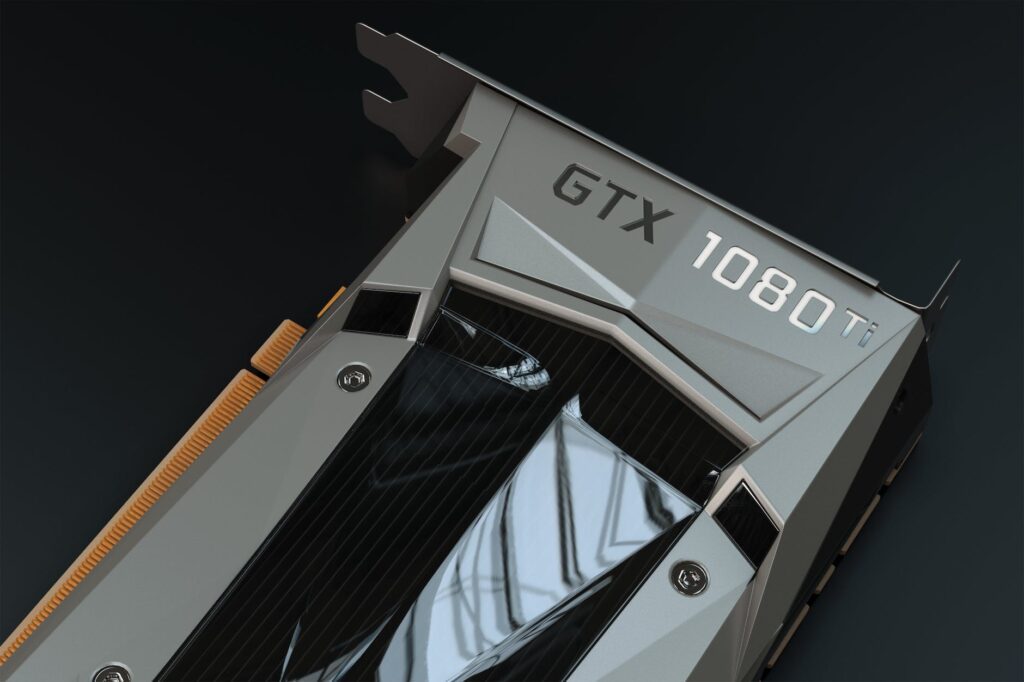Bitcoin Mining: An Introduction
In the world of cryptocurrencies, Bitcoin mining plays a vital role in the creation and verification of new transactions. It is a process that involves solving complex mathematical problems to add new blocks to the Bitcoin blockchain. This section will provide an overview of what Bitcoin mining is and why it holds significant importance.
What is Bitcoin Mining?
Bitcoin mining is the process by which new Bitcoins are created and transactions are verified and added to the blockchain. Miners use powerful computers to solve mathematical puzzles, known as hash functions, that validate and secure the transactions. By solving these puzzles, miners are rewarded with newly minted Bitcoins, incentivizing them to continue mining.
Mining also serves as a decentralized consensus mechanism, ensuring that every transaction in the Bitcoin network is valid and preventing double-spending. It relies on a peer-to-peer network of miners spread across the globe, collectively maintaining and securing the integrity of the blockchain.
To delve deeper into the technical aspects of how Bitcoin mining works, you can refer to our article on how does bitcoin mining work?. Additionally, if you’re interested in calculating potential profits from mining, you can utilize a bitcoin mining calculator to estimate your earnings based on factors such as hash rate and electricity costs.
Why is Bitcoin Mining Important?
Bitcoin mining serves several crucial purposes that contribute to the overall functioning and success of the Bitcoin network.
-
Creation of New Bitcoins: The mining process introduces new Bitcoins into circulation, ensuring a steady supply. This controlled issuance helps to maintain scarcity and control inflation.
-
Transaction Verification: Miners verify the authenticity and validity of transactions, preventing double-spending and ensuring that only legitimate transactions are added to the blockchain. This verification process enhances the security and trustworthiness of the Bitcoin network.
-
Decentralization: Bitcoin mining operates on a decentralized network of miners, eliminating the need for a central authority. This decentralized nature ensures that no single entity has control over the network, making it resistant to censorship and manipulation.
-
Network Security: The computational power contributed by miners strengthens the security of the Bitcoin network. As more miners participate, the network becomes more robust against potential attacks, increasing the overall security of the system.
Understanding the significance of Bitcoin mining sets the stage for exploring the hardware options available to miners. By selecting the right mining hardware, miners can optimize their mining operations and enhance their chances of earning rewards in the form of newly minted Bitcoins.
Understanding Bitcoin Mining Hardware
In the world of Bitcoin mining, specialized hardware plays a crucial role in the process. Understanding the role of mining hardware and considering the factors involved in choosing the right equipment is essential for successful mining operations.
The Role of Mining Hardware
Mining hardware refers to the specialized equipment used to solve complex mathematical problems and validate transactions on the Bitcoin network. These machines are designed to perform repetitive calculations at a high speed, which is necessary for mining new Bitcoin and securing the blockchain.
The primary function of mining hardware is to compete with other miners in solving mathematical puzzles. This competition is known as proof-of-work, and the first miner to solve the puzzle is rewarded with newly minted Bitcoin. The mining hardware’s computational power and efficiency determine the chances of winning this race and earning the reward.
Factors to Consider When Choosing Mining Hardware
When selecting mining hardware, several factors need to be considered to maximize mining efficiency and profitability. These include:
-
Hash Rate: The hash rate refers to the speed at which a mining machine can perform calculations. A higher hash rate means more calculations can be completed per second, increasing the chances of winning the mining reward. It is important to choose hardware with a high hash rate to stay competitive.
-
Power Consumption: Mining hardware consumes a significant amount of electricity. Miners must consider the power consumption of the equipment and the associated electricity costs. Efficient mining hardware that offers a high hash rate while minimizing power consumption is desirable.
-
Cost: The cost of mining hardware is a crucial factor in the decision-making process. Miners need to find a balance between the initial investment and the potential return on investment. It’s important to consider the hardware’s performance, longevity, and cost-effectiveness to make an informed decision.
-
Mining Difficulty: Bitcoin mining difficulty is a metric that measures the complexity of mining new blocks. As the number of miners increases, the difficulty level adjusts to ensure a consistent rate of block generation. Miners should take into account the current mining difficulty and how it may affect their mining operations.
-
Upgradability: Technology in the cryptocurrency space evolves rapidly. It is advisable to choose mining hardware that allows for future upgrades or additions to keep up with advancements and remain competitive.
By carefully considering these factors, miners can make informed decisions about the mining hardware that best suits their needs. It is also important to regularly monitor and adjust mining operations based on market conditions, mining difficulty, and the overall health of the Bitcoin network.
For more information on Bitcoin mining, including calculators to estimate mining profitability and resources to get started, check out our article on how to start bitcoin mining.
ASIC Miners
When it comes to Bitcoin mining, ASIC (Application-Specific Integrated Circuit) miners are a popular choice among miners. These specialized devices are designed specifically for the purpose of mining cryptocurrencies like Bitcoin. In this section, we will explore how ASIC miners work and discuss their pros and cons.
How ASIC Miners Work
ASIC miners are powerful machines that are built to perform a specific task: solving complex mathematical problems required for mining Bitcoin. These machines are equipped with specialized ASIC chips that are capable of executing these calculations with incredible speed and efficiency.
The key advantage of ASIC miners is their ability to perform these calculations much faster than other mining hardware options. This speed allows miners to increase their chances of successfully mining a block and earning the associated rewards. Additionally, ASIC miners are highly energy-efficient, which helps to reduce electricity costs and maximize profitability.
To ensure optimal performance, ASIC miners must be connected to a mining pool. Mining pools are groups of miners who collaborate and combine their computing power to increase their chances of mining a block. By joining a mining pool, miners can collectively contribute their hash power, increasing the likelihood of earning a share of the rewards.
Pros and Cons of ASIC Miners
ASIC miners offer several advantages and disadvantages that miners should consider when choosing their mining hardware.
Pros:
- High hash rate: ASIC miners are known for their exceptional hash rates, allowing for faster block mining and increased earnings potential.
- Energy efficiency: ASIC miners are designed to maximize energy efficiency, reducing electricity costs and increasing profitability.
- Longevity: Due to their specialized design, ASIC miners tend to have a longer lifespan compared to other mining hardware options.
Cons:
- High cost: ASIC miners can be quite expensive, making them less accessible for miners on a tight budget.
- Limited functionality: ASIC miners are designed specifically for mining cryptocurrencies, limiting their use for other tasks.
- Limited resale value: As technology advances and new generations of ASIC miners are released, older models may experience a decrease in resale value.
When considering ASIC miners, it’s important for miners to assess factors such as upfront costs, energy efficiency, and the current mining difficulty. They should also keep in mind that the most profitable ASIC miner may vary depending on the specific time and market conditions.
To explore the profitability of different ASIC miners and estimate potential earnings, miners can utilize a bitcoin mining calculator. This allows miners to input various parameters such as electricity costs, hash rate, and hardware costs to determine the potential profitability of their mining operations.
In the next section, we will explore another type of mining hardware known as GPU miners, highlighting their working principles and pros and cons.
GPU Miners
When it comes to Bitcoin mining hardware, GPU miners have gained popularity among miners for their versatility and efficiency. In this section, we will explore how GPU (Graphics Processing Unit) miners work and discuss their pros and cons.
How GPU Miners Work
GPU miners utilize the power of graphics cards to mine Bitcoins. Graphics cards are traditionally used for rendering complex graphics in video games and other graphic-intensive tasks. However, due to their parallel processing capabilities, they can also be used for cryptocurrency mining.
Bitcoin mining with GPUs involves solving complex mathematical problems to validate and secure transactions on the network. GPUs excel at performing these mathematical calculations in parallel, allowing for faster mining speeds compared to traditional CPU mining.
To start mining with GPU miners, miners need to connect multiple graphics cards to a mining rig or a specially designed motherboard. These rigs are often equipped with powerful cooling systems to keep the GPUs running at optimal temperatures during the mining process.
Pros and Cons of GPU Miners
GPU miners offer several advantages and drawbacks for Bitcoin mining. Let’s take a look at some of the key pros and cons:
| Pros of GPU Miners | Cons of GPU Miners |
|---|---|
| Faster mining speeds compared to CPU miners | Higher upfront cost for purchasing multiple graphics cards |
| Versatility – GPUs can be used for other purposes like gaming or rendering | Higher power consumption compared to specialized ASIC miners |
| Availability – GPUs are widely available and easy to obtain | Less efficient in terms of hash power per watt compared to ASIC miners |
| Ability to mine other cryptocurrencies in addition to Bitcoin | Limited lifespan due to the rapid evolution of graphics card technology |
GPU miners are particularly attractive for miners who want the flexibility to mine different cryptocurrencies or switch between mining different coins based on profitability. Additionally, the availability of graphics cards and the ability to repurpose them for other tasks make GPU mining an appealing option.
However, it’s important to consider the higher upfront costs associated with purchasing multiple graphics cards, as well as the increased power consumption and the potential for shorter lifespan compared to specialized ASIC miners. Miners should also regularly monitor the mining difficulty and adjust their mining strategies accordingly.
To determine the profitability of GPU mining, miners can use a Bitcoin mining calculator to estimate their potential earnings and consider factors such as electricity costs and mining pool fees.
While GPU miners have their pros and cons, they remain a popular choice for Bitcoin mining due to their versatility and mining capabilities. Miners should carefully consider their specific mining requirements, budget constraints, and long-term goals before deciding on the appropriate mining hardware. For more information on different mining options and strategies, check out our article on how to start bitcoin mining.
FPGA Miners
FPGA (Field Programmable Gate Array) miners are another type of hardware commonly used for Bitcoin mining. In this section, we will explore how FPGA miners work and discuss their pros and cons.
How FPGA Miners Work
Unlike ASIC miners that are designed specifically for mining cryptocurrencies like Bitcoin, FPGA miners are more flexible. These devices can be programmed and reprogrammed to perform specific tasks, including mining Bitcoin.
FPGA miners consist of an array of programmable logic blocks and programmable interconnects. Miners use software to configure the FPGA with a mining algorithm, allowing it to perform the necessary computations to mine Bitcoin. This flexibility allows FPGA miners to adapt to different mining algorithms, making them more versatile than ASIC miners.
Pros and Cons of FPGA Miners
FPGA miners offer several advantages and disadvantages when it comes to Bitcoin mining.
Pros of FPGA Miners
-
Flexibility: FPGA miners can be reprogrammed to mine different cryptocurrencies or perform other tasks, providing more versatility compared to ASIC miners.
-
Power Efficiency: FPGA miners are generally more power-efficient than CPU and GPU miners. They offer a balance between power consumption and mining performance.
-
Upgradability: FPGA miners can be upgraded by reprogramming the FPGA chip, allowing users to keep up with advancements in mining technology.
Cons of FPGA Miners
-
Cost: FPGA miners are typically more expensive than CPU and GPU miners, making them less accessible for casual miners.
-
Complexity: Programming and configuring FPGA miners require technical knowledge and expertise. It may not be as straightforward as using ASIC or GPU miners.
-
Limited Availability: Compared to ASIC miners, FPGA miners have a more limited availability in the market. Finding and purchasing FPGA mining hardware can be challenging.
When considering FPGA miners for Bitcoin mining, it’s important to weigh the pros and cons alongside other factors such as cost, mining efficiency, and availability. Keep in mind that the cryptocurrency mining landscape is constantly evolving, and it’s essential to stay informed about the latest developments in hardware and mining algorithms.
For a comprehensive understanding of Bitcoin mining and how to get started, check out our article on how does bitcoin mining work? and how to start bitcoin mining. If you’re interested in exploring other types of mining hardware, read our sections on ASIC miners and GPU miners.
Cloud Mining
As the world of Bitcoin mining continues to evolve, cloud mining has emerged as an alternative to traditional mining hardware. In this section, we will explore what cloud mining entails and discuss its pros and cons.
What is Cloud Mining?
Cloud mining, also known as remote mining, allows individuals to mine Bitcoin and other cryptocurrencies without the need for physical mining hardware. Instead of purchasing and maintaining their own equipment, users can rent mining power from a cloud mining provider.
In cloud mining, the mining process is carried out remotely in a data center operated by the cloud mining provider. Users simply need to purchase a mining contract or subscription, and the provider takes care of the rest. This includes managing the hardware, handling maintenance and repairs, and ensuring optimal mining performance.
Cloud mining offers convenience and accessibility to those who may not have the technical expertise or resources to set up and maintain their own mining hardware. It provides an opportunity to participate in the mining process without the need for significant upfront investment or ongoing operational costs.
Pros and Cons of Cloud Mining
Like any other mining method, cloud mining has its advantages and disadvantages. Let’s take a closer look at the pros and cons:
Pros of Cloud Mining:
- Convenience: Cloud mining eliminates the need to deal with the complexities of setting up and maintaining mining hardware. Users can start mining with just a few clicks.
- Cost Savings: Cloud mining eliminates the need to purchase mining equipment, which can be expensive. Users can instead pay for mining power on a subscription basis, potentially reducing upfront costs.
- Flexibility: Cloud mining allows users to easily scale their mining operations by adjusting their subscription or contract. They can increase or decrease their mining power as needed.
- Reduced Energy Consumption: Since cloud mining takes place in data centers, users can potentially save on electricity costs and reduce their carbon footprint.
Cons of Cloud Mining:
- Less Control: With cloud mining, users have limited control over the mining process. They rely on the cloud mining provider to manage the hardware and ensure its optimal performance.
- Dependency on Provider: The success of cloud mining operations depends on the reliability and reputation of the chosen provider. Users should thoroughly research and choose a reputable provider.
- Potential for Scams: The cloud mining industry has seen its share of fraudulent operations in the past. Users need to exercise caution and carefully evaluate the legitimacy of the provider before investing.
- Lower Profitability: Cloud mining may be less profitable compared to traditional mining methods. Users should consider factors such as fees, maintenance costs, and the mining difficulty level.
It is essential to conduct thorough research and carefully consider the pros and cons before diving into cloud mining. Factors such as the reputation of the provider, fees, contract terms, and projected profitability should all be taken into account. If you want to learn more about other aspects of bitcoin mining, check out our articles on bitcoin mining explained and bitcoin mining difficulty.
By understanding the concept of cloud mining, you can make an informed decision on whether it aligns with your mining goals and resources.
Making the Right Choice
When it comes to selecting the right bitcoin mining hardware, there are several factors to consider. Making an informed decision is crucial to ensure optimal performance, cost-efficiency, and profitability. Here are some key factors to keep in mind when choosing mining hardware:
Factors to Consider When Selecting Mining Hardware
-
Hash Rate: The hash rate refers to the computational power of the mining hardware. It represents the number of calculations the hardware can perform per second. A higher hash rate typically results in faster mining and increased chances of earning bitcoin rewards.
-
Energy Efficiency: Energy consumption is an important consideration, as mining can require significant electricity. Opting for energy-efficient mining hardware helps reduce operational costs and maximize profitability. Look for hardware with a high hash rate-to-power ratio to achieve better energy efficiency.
-
Cost: Mining hardware comes at various price points. Consider your budget and the return on investment (ROI) potential when selecting hardware. Compare the cost of the hardware with its hash rate and energy efficiency to determine the best value for your investment.
-
Hardware Longevity: The durability and lifespan of mining hardware are essential factors to consider. Look for hardware that is built to withstand the demands of continuous mining operations. Investing in reliable and long-lasting equipment can minimize downtime and maintenance costs.
Balancing Cost, Efficiency, and Profitability
When making the final decision, it’s essential to strike a balance between cost, efficiency, and profitability. Higher-priced mining hardware may offer better performance and energy efficiency, but it may also have a longer ROI period. Conversely, lower-priced hardware may have a lower initial investment but may be less efficient in terms of hash rate and energy consumption.
To assist in analyzing the potential profitability of different mining hardware options, you can use a bitcoin mining calculator. This tool allows you to input the hardware specifications, electricity costs, and other relevant parameters to estimate potential earnings and ROI.
Remember to stay up-to-date with the latest developments in the mining industry and keep an eye on changes in mining difficulty and bitcoin rewards. These factors can impact the profitability of your mining operations.
By carefully considering the factors mentioned above and finding the right balance between cost, efficiency, and profitability, you can make an informed decision when selecting your bitcoin mining hardware. Keep in mind that the mining landscape is constantly evolving, so it’s important to stay informed and adapt your hardware choices accordingly. For more information on bitcoin mining, check out our article on how does bitcoin mining work?.



